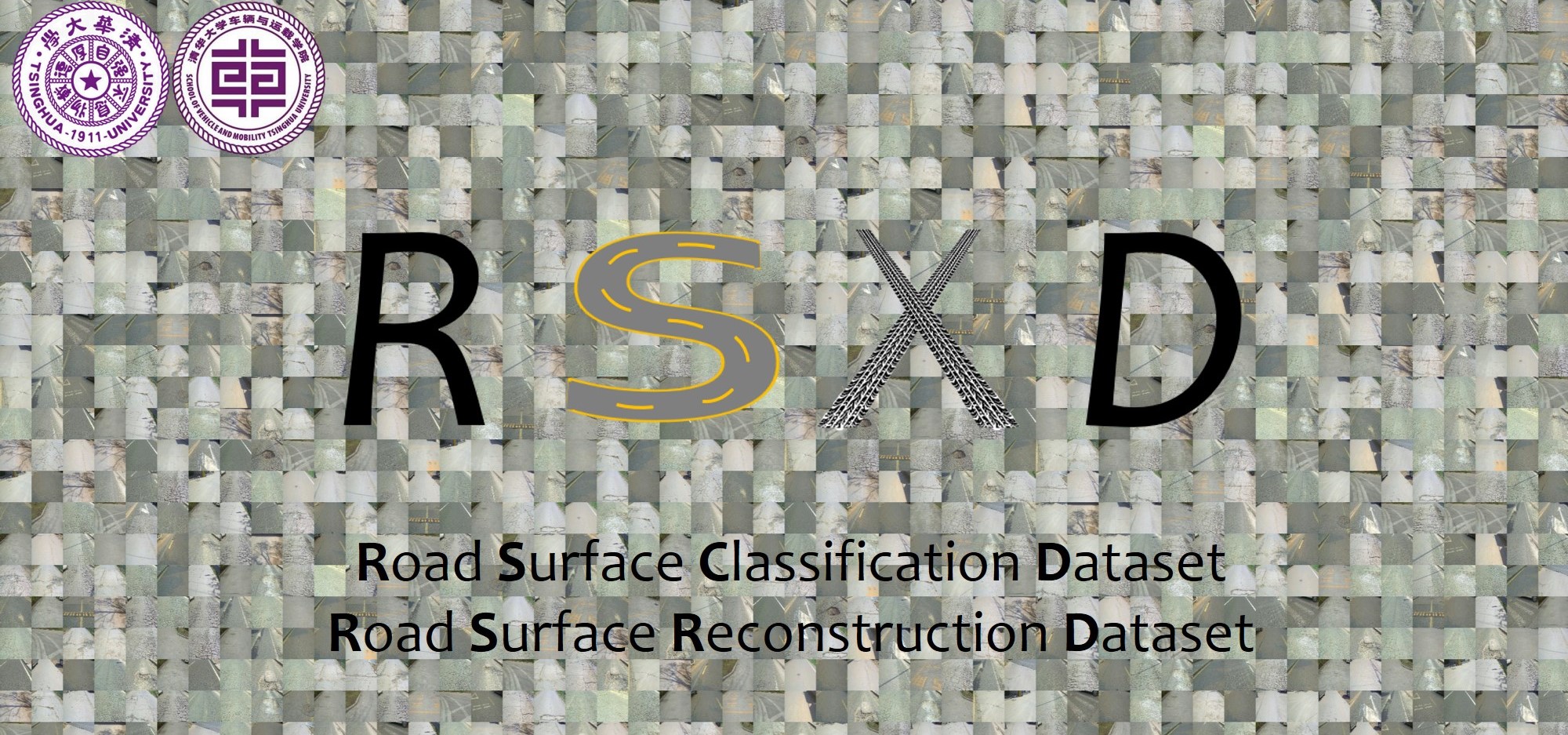What RSXD?
The current perception research for autonomous driving (AD) mainly concentrates on the traffic environment understanding, such as obstacle detection & tracking, lane & drivable area detection, traffic light & sign recognition, and motion prediction. These perception pipelines contributes to realize motion control. In high-speed and harsh driving environments, the dynamics characteristics of tire-road interactions is still the last security moat. Road is the only component in the physical world that vehicles have contact with. However, we know little about the road itself. Vehicle's feet and legs float in the air.
To fill this gap, we build and release RSXD, consisting of Road Surface Classification Dataset and Road Surface Reconstruction Dataset.
With the two datasets, we can obtain a comprehensive understanding of road conditions, especially the most important friction and unevenness. Road condition preview contributes to both the advanced driving assistance systems and L4+ AD vehicles. The accuracy and performance of trajectory planning and tracking/control systems will be greatly enhanced. Meanwhile, the road condition information can also be utilized in applications such as road health monitoring and accident prevention.
Why RSXD?
The existing datasets for AD perception (e.g. KITTI, Argoverse, and nuScenes) captures the whole surrounding scene, leaving a small area for road surface. The resolution and definition of road surface in the images are poor; the accuracy and density of road surface in the point clouds are low. Most significantly, they offer no detailed ground-truth information about road surface conditions.
Our RSXD is the first dataset specifically for road surface perception.The RSCD is an image dataset for classifying road conditions, providing detailed road friction, material, and unevenness level annotations. The RSRD is a multi-modal dataset for road reconstruction, providing recitfied stereo images, stereo disparity, depth, point cloud, and location/pose labels.
How RSXD?
For practical engineering applications, we make great efforts in expanding the dataset diversity and promoting label accuracy. We conduct experiments in various weather/seasons, urban/rural areas, and roads with different material, service age, and traffic flow. The RSCD contains 1million image samples of 360*240px size, covering about 700km roads. The RSRD contains 2800 pairs with dense labels, and 13K pairs with sparse labels.
All the data is processed by initial annotation and further quality inspection. The accuracy requirement and decision boundary are strictly defined, thus minimizing the subjective bias and label noise.
Usage
The RSXD (including RSCD and RSRD) is licensed under the permissive CC BY-NC. The datasets are released based on the resources of Tsinghua University, who possesses the complete copy right.
The RSXD is only open to academic research, not for any commercial use.
